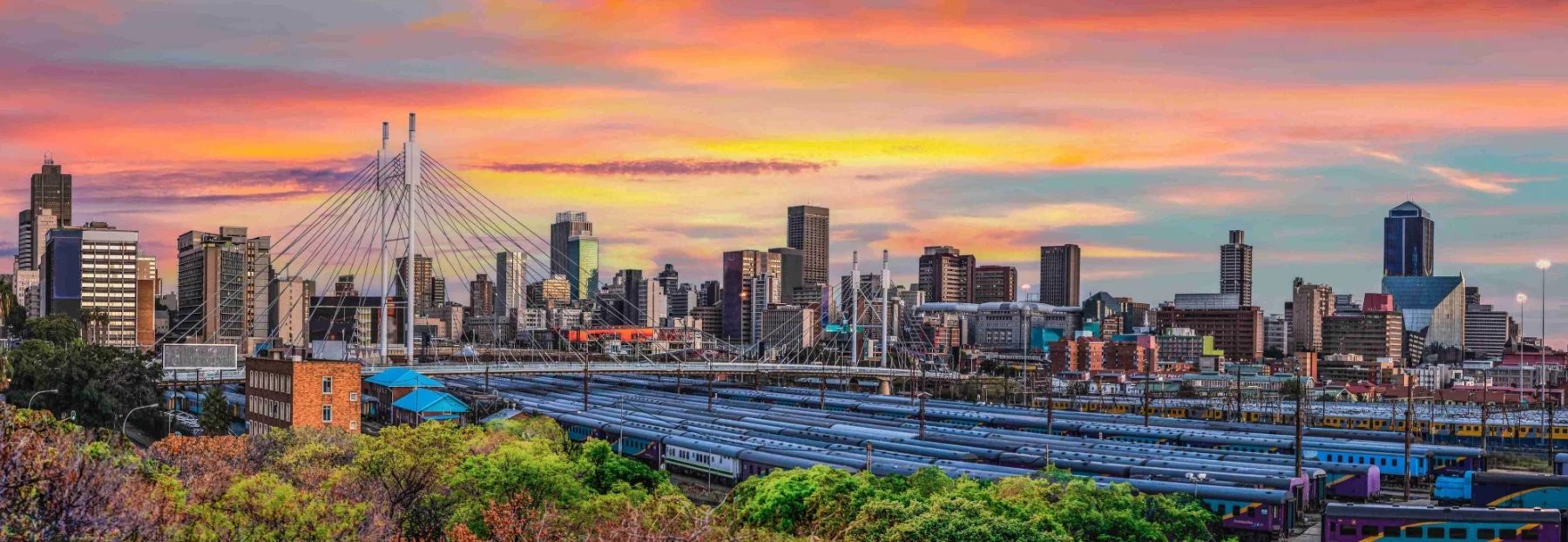The 12 essential things to do in Johannesburg
Last update : 30/05/2024 16:10Summary
- To visit
-
- 1 - The Apartheid Museum
- 2 - Constitution Hill
- 3 - Soweto
- 4 - The Maboneng district
- 5 - Lion Park & Safari
- 6 - Montecasino
- 7 - Cradle of Humankind
- 8 - The Johannesburg Botanical Garden
- 9 - Johannesburg Zoo
- 10 - Rosebank Flea Market
- 11 - Johannesburg nightlife
- 12 - Local cuisine
- Johannesburg - Where to Stay?
- Johannesburg - How to get around?
- Johannesburg - Best period
Johannesburg offers a fascinating exploration with its rich cultural tapestry and vibrant history. Here are some key themes for a travel itinerary in Johannesburg:
-
Apartheid History: Visit iconic sites like the Apartheid Museum to understand this pivotal era in South Africa's history. Soweto also offers guided tours connecting apartheid history with local experiences.
-
Art and Culture: Johannesburg boasts a dynamic arts scene. Don't miss the Rosebank Craft Market or the Maboneng Precinct for contemporary South African art and local galleries.
-
Nature and Wildlife: Near Johannesburg, you can visit the renowned Kruger National Park for an unforgettable safari experience. Alternatively, explore Lion & Safari Park or Johannesburg Zoo for a closer encounter with African wildlife.
-
Cuisine and Nightlife: Experience South African cuisine at local restaurants in Johannesburg, blending African, Indian, and European flavors. In the evening, explore the city's bars and clubs for its lively nightlife.
-
Architecture and Urbanism: Johannesburg showcases a diversity of architecture, from modern skyscrapers to historic buildings. Take a guided architectural tour to understand the city's evolution from its early days.
-
Markets and Shopping: Johannesburg's markets offer a variety of handmade crafts, clothing, and art. Neighbourgoods Market in Braamfontein is particularly popular for local products and a trendy vibe.
-
Responsible Travel: Johannesburg also provides opportunities for responsible tourism, including local-led tours, community development initiatives, and eco-friendly accommodations.
Exploring these themes in Johannesburg will immerse you in a dynamic city that blends history, culture, nature, and a vibrant contemporary scene.
1 - The Apartheid Museum
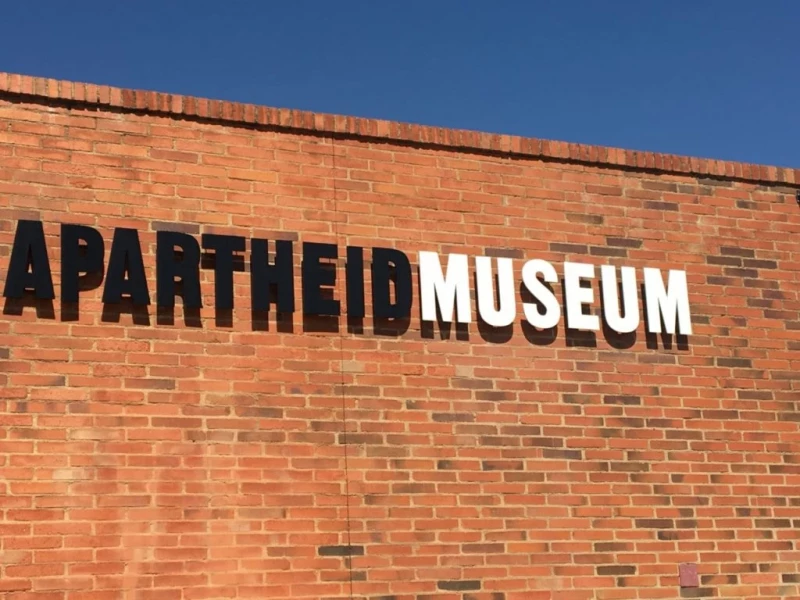
The Apartheid Museum is located in Johannesburg, South Africa, and it chronicles the history of apartheid, the institutionalized system of racial segregation that was in place in South Africa from 1948 to 1994. Here are some key points about the museum:
-
History and Purpose: The museum was inaugurated in 2001 with the aim of documenting and exhibiting various aspects of apartheid, including its origins, its impact on South African society, and its legacy.
-
Exhibitions: It houses a diverse collection of historical documents, artifacts, photographs, and films that detail the discriminatory policies, struggles of resistance, and personal stories of those affected by apartheid.
-
Visual and Educational Experience: Visitors can explore interactive exhibitions that highlight the injustices of apartheid as well as the efforts of resistance and reconciliation that have shaped modern South African history.
-
Impact and Reflection: The museum also aims to provoke reflection on past injustices and to encourage dialogue on human rights, social justice, and reconciliation in a post-apartheid context.
-
Site of Memory: As a national memorial site, the Apartheid Museum plays a crucial role in educating current and future generations about the mistakes of the past and the challenges of building a democratic and inclusive society.
In summary, the Apartheid Museum is not only a significant cultural institution in South Africa but also a symbol of commitment to historical truth, justice, and reconciliation in a country marked by a tumultuous past.
 Our tips for getting the most out of your experience.
Our tips for getting the most out of your experience.
Here are some tips for visiting the Apartheid Museum in Johannesburg:
-
Plan your visit: The museum can be extensive and rich in information. Take time to check their website or read guides before your visit to get an idea of the exhibitions and points of interest you want to explore.
-
Use audio guides: The museum offers audio guides in multiple languages, including English and French, providing detailed explanations of the exhibitions. This can enrich your experience and provide important historical context.
-
Take your time: The history of apartheid is complex and emotionally charged. Allocate enough time to absorb the information and reflect on what you see. Some parts of the museum can be particularly moving.
-
Join guided tours: If possible, participate in a guided tour organized by the museum. Guides are often well-informed and can provide deep local and historical perspectives.
-
Explore interactive exhibitions: The museum features interactive exhibitions that allow for a deeper immersion into the events and experiences during apartheid. Don't hesitate to engage actively with these exhibits.
-
Respect rules and fellow visitors: As with any memorial site, observe museum rules and be respectful towards other visitors. The experience can be intense for many people.
-
Continue reflection after your visit: After visiting the museum, take time to reflect on what you've learned and the implications of apartheid history. This can stimulate important conversations and deepen your understanding of South African history and social justice issues.
By following these tips, you can make the most out of your visit to the Apartheid Museum and gain an enriched understanding of this period of South African history.
2 - Constitution Hill
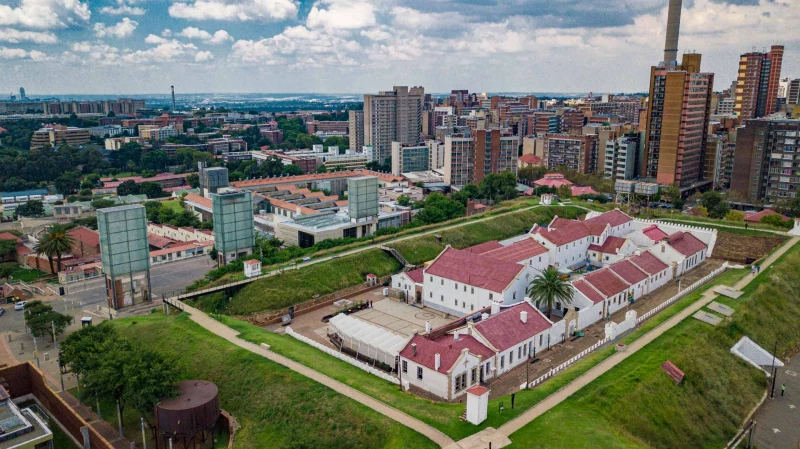
Constitution Hill is a historic site in Johannesburg, South Africa, renowned for its significance in the country's history and its pivotal role in the struggle against apartheid. Here are some key points about Constitution Hill:
-
Historical Significance: It was a prison complex where many notable political activists, including Nelson Mandela and Mahatma Gandhi, were incarcerated during the apartheid era.
-
Location: Situated in Braamfontein, Johannesburg, Constitution Hill offers a commanding view of the city skyline.
-
Court Complex: Today, it houses the Constitutional Court of South Africa, the highest court in the country for constitutional matters.
-
Museum and Tours: Visitors can explore the site through guided tours that encompass the Old Fort, Women's Jail, and Number Four, providing insights into the harsh conditions endured by political prisoners.
-
Symbol of Freedom: Constitution Hill has become a symbol of South Africa's journey from oppression to democracy, emphasizing the importance of human rights and the rule of law.
Visiting Constitution Hill offers a profound understanding of South Africa's tumultuous history and its ongoing commitment to justice and equality.
3 - Soweto
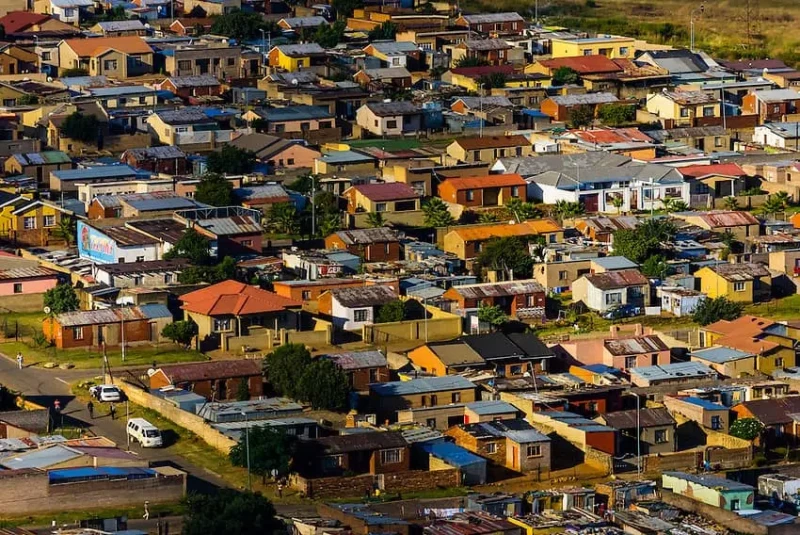
Soweto stands for "South Western Townships" and is a township of Johannesburg, South Africa. It gained international attention during the apartheid era as a hotbed of resistance against racial segregation policies. Today, Soweto is a vibrant cultural and historical hub, known for its role in the struggle for freedom and its rich heritage, including being the home of Nelson Mandela and Desmond Tutu, among others.
 Our tips for getting the most out of your experience.
Our tips for getting the most out of your experience.
Here are some tips for visiting Soweto to make your experience more enjoyable and enriching:
-
Choose a local guide: Hiring a local guide can provide you with a more authentic and insightful perspective of Soweto, its history, culture, and people.
-
Respect the local culture: Soweto is a community with a rich history and culture. Be respectful towards the residents, their traditions, and customs.
-
Visit historical sites: Soweto is home to significant historical sites such as the Hector Pieterson Museum, Nelson Mandela House Museum, and the Desmond Tutu Memorial. Plan your itinerary accordingly to maximize your visit.
-
Be mindful of your safety: While Soweto is a popular tourist destination, it's always advisable to exercise normal safety precautions. Avoid venturing alone into poorly lit areas at night and keep an eye on your belongings.
-
Try local cuisine: Take the opportunity to sample local cuisine at restaurants and street vendors. Popular South African dishes to try include bunny chow and pap (a type of maize porridge).
-
Interact with locals: Don't miss the chance to engage with Soweto residents. Many are friendly and welcoming, and chatting with them can enrich your experience.
-
Appreciate street art: Soweto boasts a vibrant street art scene. Take a stroll to discover murals, sculptures, and other art forms that reflect the life and history of the community.
-
Explore different neighborhoods: Soweto is diverse with various neighborhoods each having its own character. Take time to explore multiple neighborhoods for a more comprehensive view.
By following these tips, you should be able to fully enjoy your visit to Soweto and learn more about this important part of South African history and culture.
4 - The Maboneng district
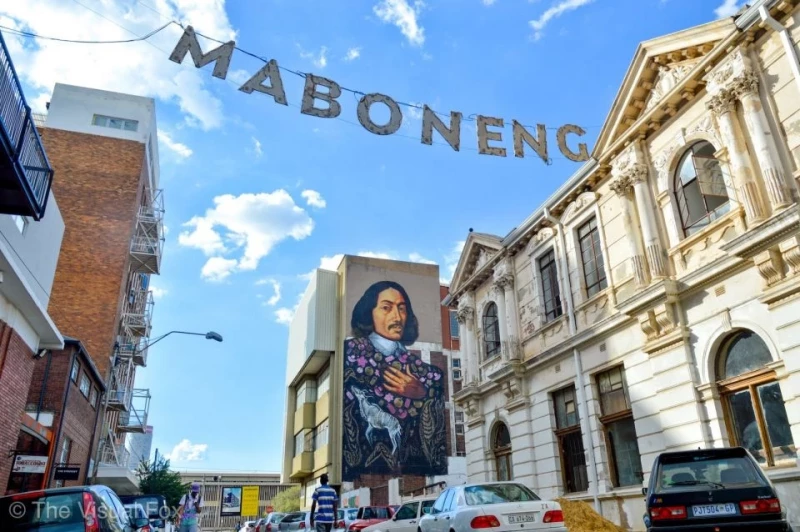
Maboneng, located in Johannesburg, South Africa, is a vibrant and rapidly evolving neighborhood. Its name means "place of light" in Sotho, reflecting its transformation from a neglected area into a bustling urban center focused on art, culture, and creativity.
Here are some key aspects of Maboneng:
-
Art and Culture: Maboneng is home to numerous artist studios, art galleries, theaters, and performance spaces. It has become a significant hub for art enthusiasts and emerging artists in South Africa.
-
Nightlife and Entertainment: The neighborhood is renowned for its lively nightlife with trendy bars, restaurants, and entertainment venues.
-
Architecture: Maboneng is characterized by its modern urban architecture, blending renovated industrial buildings with new architectural developments.
-
Local Markets and Shops: Visitors can explore local markets, designer boutiques, and a vibrant community atmosphere that attracts both locals and tourists.
-
Community Initiatives: The area has been the focus of various urban revitalization and community development efforts aimed at enhancing the quality of life for local residents.
Maboneng is often seen as a symbol of Johannesburg's urban renewal, offering a stark contrast to other parts of the city. It's a place where contemporary creativity thrives, while showcasing the history and cultural diversity of modern South Africa.
 Our tips for getting the most out of your experience.
Our tips for getting the most out of your experience.
Here are some tips for exploring and enjoying the vibrant neighborhood of Maboneng in Johannesburg:
-
Plan Your Visit: Check local events and art exhibitions happening during your stay. Maboneng often hosts art events, street markets, and outdoor performances.
-
Explore on Foot: The best way to experience Maboneng is on foot. Wander through the streets to discover colorful murals, sculptures, and art installations scattered throughout the neighborhood.
-
Visit Art Galleries: Don't miss out on contemporary art galleries showcasing the work of local and international artists. Some galleries host openings and special events.
-
Cuisine and Cafés: Maboneng is home to trendy cafes, restaurants, and bars. Enjoy sampling modern South African and international cuisine while soaking in the lively atmosphere of the area.
-
Check Out Markets: Local markets like the Sunday market at Arts on Main are great for purchasing local produce, crafts, and unique souvenirs.
-
Safety: While Maboneng has improved significantly in terms of safety, it's always wise to remain vigilant, especially at night. Avoid displaying valuable items and follow the advice of locals or guides.
-
Engage in Community Events: If possible, participate in community events or local development projects to learn more about the history and daily life of Maboneng residents.
By following these tips, you'll be better prepared to explore Maboneng and make the most of your visit to this dynamic neighborhood in Johannesburg.
5 - Lion Park & Safari
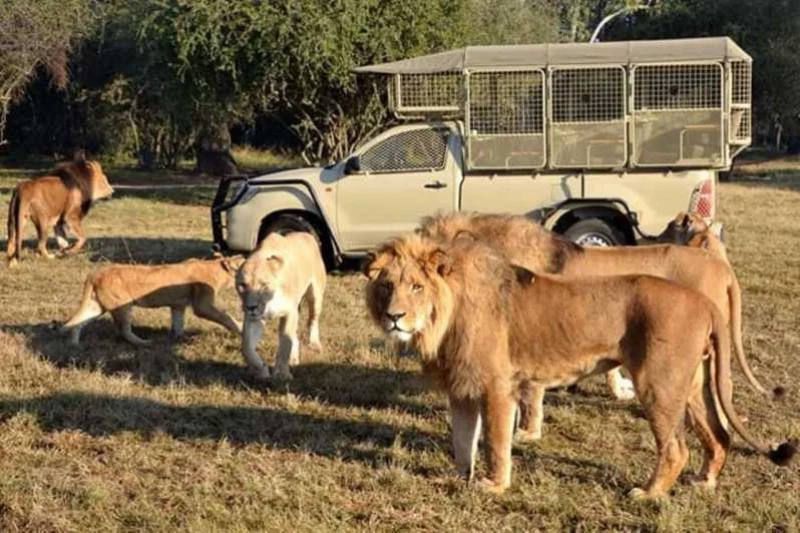
The Lion & Safari Park Johannesburg is a popular attraction located near Johannesburg, South Africa. It provides visitors with the opportunity to get up close to African wildlife in a natural and preserved environment. The park is home to a variety of animals including lions, leopards, rhinos, elephants, giraffes, zebras, and many more.
Visitors can enjoy guided safari tours by car to observe the animals in their natural habitat. These safaris often offer unique opportunities to see the Big Five (lion, leopard, elephant, rhinoceros, and buffalo) as well as other iconic species of the African savannah.
In addition to car safaris, the park also offers activities such as elephant-back rides, cheetah encounters, free-flying bird shows, and guided walking tours to discover the local fauna and flora.
The Lion & Safari Park Johannesburg provides an immersive experience of African wildlife and is a must-visit destination for nature lovers and adventure enthusiasts in South Africa.
 Our tips for getting the most out of your experience.
Our tips for getting the most out of your experience.
Here are some tips to make the most of your visit to the Lion & Safari Park Johannesburg:
-
Plan ahead: Check the opening hours and availability of activities such as guided car safaris and special animal encounters.
-
Choose the right time of day: Animals are often more active early in the morning or late in the afternoon. Plan your visit to increase your chances of seeing a variety of wildlife.
-
Bring binoculars and a camera: Binoculars are essential for observing animals from a distance and a camera with zoom capabilities will help you capture great photos without getting too close to wild animals.
-
Follow safety guidelines: Always respect the park rules and follow the instructions of guides. Keep car windows closed during guided safaris and never exit the vehicle unless instructed.
-
Enjoy special activities: Some activities like elephant-back rides or cheetah encounters may require advance booking. Check and reserve ahead of time if necessary.
-
Learn and observe: Guides are often knowledgeable and passionate about local wildlife. Ask questions and learn more about the animals and their environment.
-
Prepare for the weather: Depending on the season, weather conditions can vary. Wear comfortable clothing and be prepared for local weather conditions (such as strong sun in summer or cooler temperatures in winter).
By following these tips, you'll be ready to have an unforgettable experience at the Lion & Safari Park Johannesburg while respecting the natural habitat and wildlife there.
6 - Montecasino
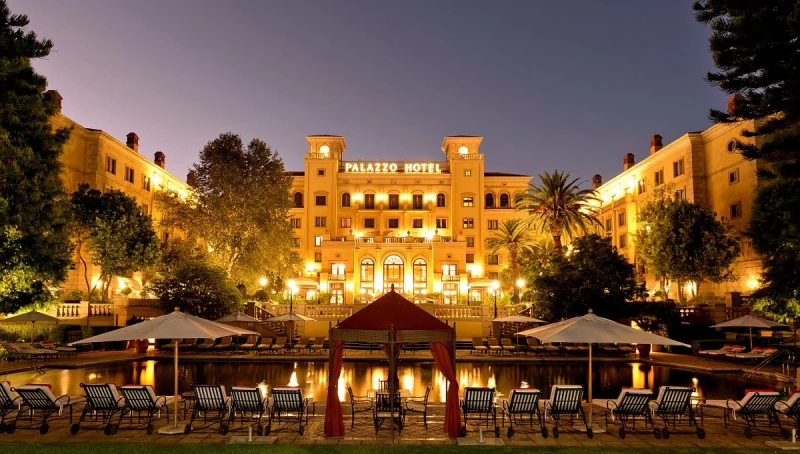
Montecasino is a leisure and casino complex located in Fourways, Johannesburg, South Africa. It's known for its Italian village-style architecture and a variety of entertainment options, including a casino, theaters, restaurants, bars, and hotels. Montecasino is a popular destination for both locals and tourists seeking entertainment, dining, and gambling experiences in Johannesburg.
 Our tips for getting the most out of your experience.
Our tips for getting the most out of your experience.
Here are some tips for visiting Montecasino in Johannesburg:
-
Plan Ahead: Check Montecasino's website for opening hours, special events, and current promotions.
-
Timing: Avoid peak times for a quieter experience. Generally, weekday mornings are less crowded.
-
Entertainment Options: Explore all available options such as theater shows, movies, or special events happening during your visit.
-
Dining: Montecasino offers a wide variety of restaurants. Make reservations in advance if you have a particular preference or are visiting during peak hours.
-
Transportation: Plan your transportation to Montecasino. The complex has parking facilities, but check rates and availability.
-
Casino Gaming: If you plan to gamble, set a budget and stick to it. Knowing the rules of the games you want to play can also be helpful.
-
Dress Code: While Montecasino is casual in most areas, some restaurants and clubs may have a stricter dress code. Check in advance to avoid surprises.
-
Safety: Like any tourist destination, keep an eye on your belongings and follow the complex's safety guidelines.
By following these tips, you can make the most of your visit to Montecasino and enjoy all that this leisure complex has to offer.
7 - Cradle of Humankind
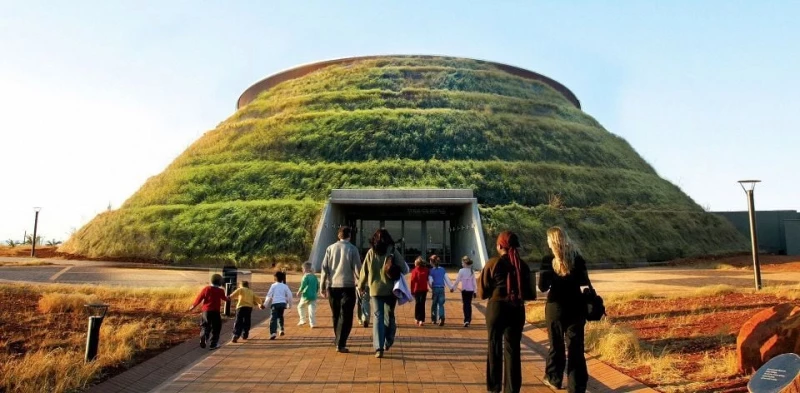
The Cradle of Humankind is a UNESCO World Heritage Site located in South Africa, about 50 kilometers northwest of Johannesburg. It's renowned for its significant archaeological discoveries related to human evolution and early hominid fossils.
Key Points:
-
Location: The Cradle of Humankind is situated in the Gauteng province of South Africa, encompassing an area of around 47,000 hectares.
-
Significance: It is one of the world's most important paleoanthropological sites, with over 40% of the world's known human ancestor fossils discovered there.
-
Fossil Discoveries: Fossils found in the area date back millions of years and have contributed significantly to our understanding of human evolution, including the famous discoveries of Australopithecus africanus and Homo naledi.
-
Sterkfontein Caves: Within the Cradle of Humankind, the Sterkfontein Caves are particularly notable. They have yielded numerous hominid fossils, including the 2.3 million-year-old Australopithecus africanus skull known as "Mrs. Ples".
-
Visitor Experience: The site offers visitors the opportunity to explore several fossil excavation sites, visitor centers, and museums that showcase the history of human evolution.
-
Scientific Research: Ongoing archaeological and paleontological research continues to uncover new insights into the origins and development of humans and our ancestors.
The Cradle of Humankind plays a crucial role not only in scientific research but also in educating the public about our shared evolutionary history.
8 - The Johannesburg Botanical Garden
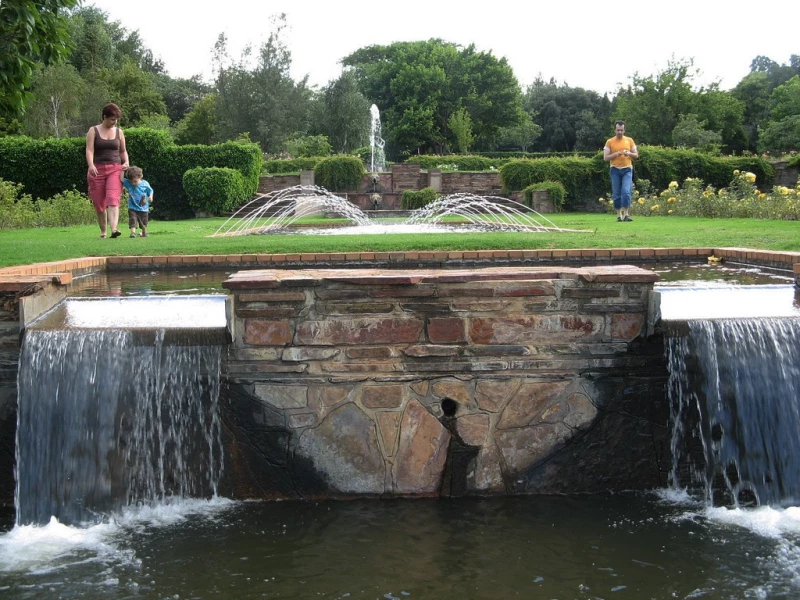
The Johannesburg Botanical Garden, located in Emmarentia suburb about 6 km west of downtown Johannesburg, South Africa, is a flourishing green space in the heart of the city. Here are some key points about this botanical garden:
-
Location and Size: Established in 1964, the garden spans approximately 81 hectares (200 acres), providing a serene retreat within the bustling metropolis.
-
Features: The garden boasts a diverse collection of indigenous and exotic plants, along with thematic gardens such as rock gardens, medicinal gardens, and rose gardens. A picturesque lake offers boating opportunities, adding to its charm.
-
Activities: Visitors can enjoy picnics, cycling, walking trails, and guided tours to explore the rich botanical diversity and learn about conservation efforts.
-
Education and Conservation: The Johannesburg Botanical Garden serves as an educational hub, promoting environmental awareness and biodiversity conservation. It houses a research center and conducts educational programs to engage the public in nature conservation.
Overall, the Johannesburg Botanical Garden not only provides recreational opportunities amidst nature but also plays a crucial role in conservation and environmental education within Johannesburg's urban landscape.
 Our tips for getting the most out of your experience.
Our tips for getting the most out of your experience.
Here are some tips to make the most of your visit to the Johannesburg Botanical Garden:
-
Plan Your Visit: Check the opening hours and any special events happening during your visit. This helps you schedule your time effectively and participate in interesting activities.
-
Explore Different Thematic Gardens: Don't miss out on special gardens like rock gardens, medicinal gardens, and rose gardens. Each offers a unique experience with a variety of plants to discover.
-
Bring a Picnic: The garden is a great spot for an outdoor picnic. Bring your own food and enjoy the green spaces for a relaxing meal.
-
Join a Guided Tour: Guided tours are often available and provide an excellent opportunity to learn about the garden's history, its flora, and conservation efforts. It's also a chance to discover details you might miss on your own.
-
Respect the Environment: Follow garden rules regarding conservation and environmentally friendly behavior. Take your trash with you and avoid disturbing local wildlife and plants.
-
Take Advantage of Activities: If the garden offers activities like boat rides on the lake, special events, or exhibitions, take part to enhance your experience.
-
Capture Your Moments: Don't forget to bring your camera to capture the beauty of the plants, landscapes, and artistic installations throughout the garden.
By following these tips, you'll ensure a pleasant and enriching experience at the Johannesburg Botanical Garden, making the most of everything it has to offer.
9 - Johannesburg Zoo
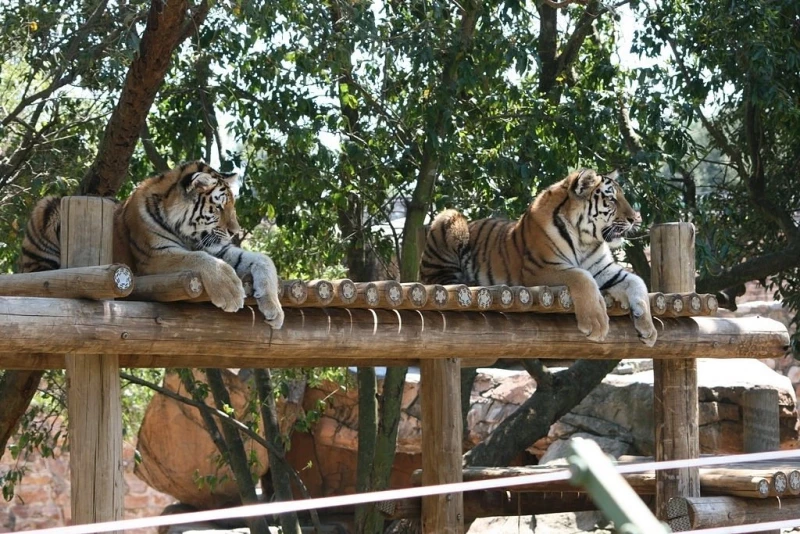
Johannesburg Zoo
The Johannesburg Zoo, located in South Africa, stands as one of the most significant zoos on the African continent. It houses a wide variety of indigenous and exotic animals, providing visitors with an educational and immersive experience.
History and Importance
Established in [year], the zoo has played a crucial role in the conservation and preservation of many endangered species. It is involved in captive breeding and reintroduction programs, contributing to the protection of biodiversity.
Residents
Among its famous residents are lions, elephants, giraffes, rhinoceroses, hippos, as well as a variety of birds and reptiles. The zoo is also renowned for its collection of African apex predators, offering visitors a unique opportunity to see these majestic animals up close.
Activities and Initiatives
The Johannesburg Zoo not only offers animal exhibits but also educational programs to raise awareness about wildlife conservation and environmental protection. Guided tours, animal shows, and interactive activities are regularly organized to enrich the visitor experience.
Conservation and Research
As a conservation institution, the zoo actively participates in scientific research and projects aimed at safeguarding endangered species. It collaborates with other zoological organizations and universities to improve species management programs and contribute to biodiversity conservation.
Conclusion
The Johannesburg Zoo plays a vital role in the conservation of African wildlife and in educating the public about environmental issues. By visiting the zoo, visitors not only appreciate the beauty of animals but also contribute to preservation efforts that are essential for the future of our planet.
10 - Rosebank Flea Market
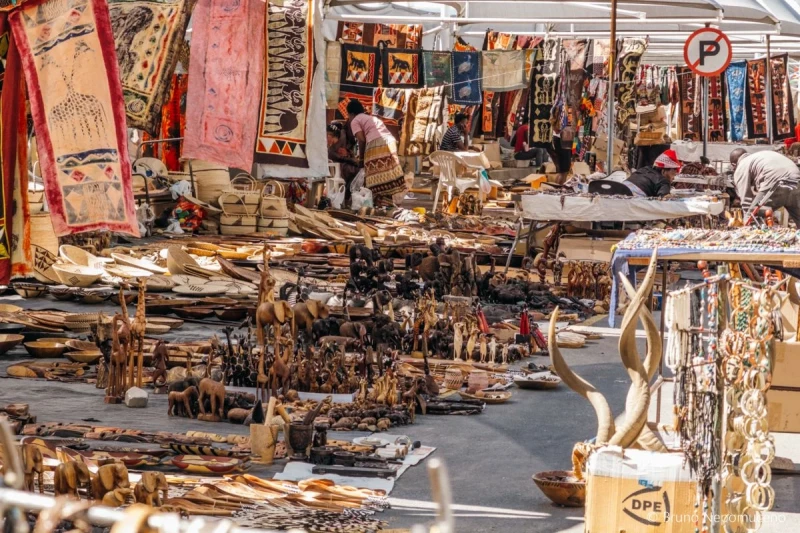
The Rosebank Flea Market is a vibrant marketplace located in Johannesburg, South Africa. It's renowned for its diverse range of goods, from crafts and art to clothing and jewelry. Visitors can explore stalls offering unique African handicrafts, antiques, books, and much more. The market is not only a shopping destination but also a cultural experience, often featuring live music and delicious food stalls serving local and international cuisine. It's a great place to discover South African creativity and enjoy a lively atmosphere on weekends.
 Our tips for getting the most out of your experience.
Our tips for getting the most out of your experience.
Here are some tips to make the most of your visit to the Rosebank Flea Market:
-
Arrive early: To beat the crowds and have first pick of the merchandise, it's best to arrive early in the morning.
-
Negotiate respectfully: Bargaining is often accepted, but approach it with politeness and a friendly attitude.
-
Explore all stalls: Take your time to explore each stall thoroughly as there are often hidden treasures and unique items to discover.
-
Enjoy local food: Don't miss out on trying local specialties offered by food stalls around the market.
-
Check opening hours: Make sure to verify the market's opening hours as they can vary depending on the day of the week and season.
-
Bring cash: While some vendors may accept credit cards, it's advisable to carry cash for smaller transactions and easier negotiation.
-
Keep an eye on your belongings: Like any bustling market, be mindful of your personal belongings to avoid any issues.
-
Be prepared for the weather: Johannesburg can experience varying temperatures, so dress accordingly and consider bringing a fan or hat if needed.
By following these tips, you'll be well-prepared to have a enjoyable and enriching experience at the Rosebank Flea Market!
11 - Johannesburg nightlife
The nightlife of Johannesburg is vibrant and diverse, offering a range of experiences from trendy bars and clubs to upscale restaurants and various entertainment venues. Here are some key aspects of Johannesburg's nightlife:
-
Bars and Clubs: The city boasts numerous bars and clubs where you can listen to live music, dance to local or international beats, and enjoy a lively atmosphere. Neighborhoods like Melville, Rosebank, and Sandton are known for their dynamic nightlife scenes.
-
Restaurants and Cafés: Johannesburg offers a plethora of dining options to suit every taste and budget. Many restaurants stay open late, and some transform into nighttime entertainment venues with live performances or DJs.
-
Cultural Events: The city regularly hosts nighttime cultural events such as theatre shows, concerts, film screenings, and art exhibitions.
-
Night Markets: Some markets in the city become lively spaces at night, offering street food, local products, crafts, and sometimes music performances.
-
Safety: Like in any major city, it's advisable to take safety precautions at night in Johannesburg. It's recommended to frequent popular, well-lit areas, avoid displaying signs of excessive wealth, and remain vigilant about personal belongings.
In summary, Johannesburg's nightlife is dynamic and reflects the city's cultural diversity, catering to all tastes whether you're seeking a quiet evening at a chic restaurant or a lively night out at a trendy club.
12 - Local cuisine
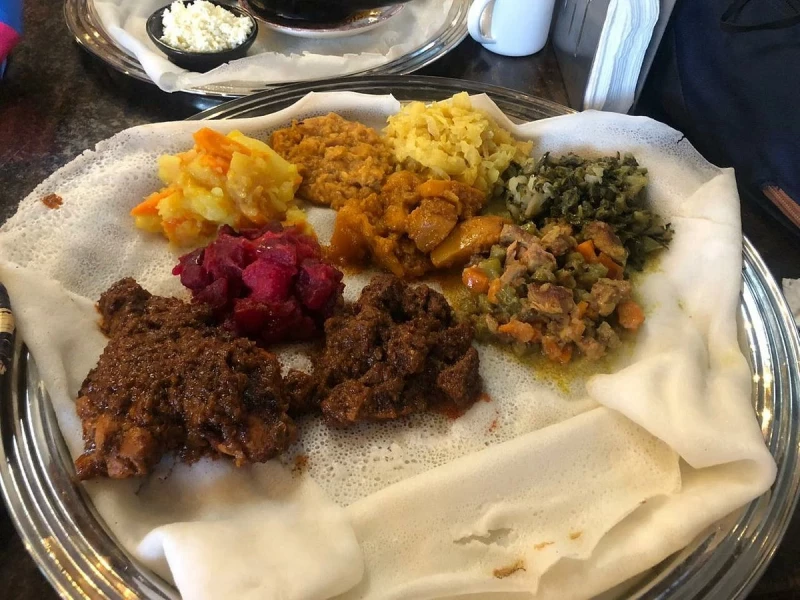
Local cuisine in Johannesburg is rich in diversity and reflects the city's cultural heritage. Here are some key elements of local gastronomy:
-
Braai (South African barbecue): This is a deeply rooted tradition throughout South Africa, including Johannesburg. Braais often feature meats like beef, lamb, or chicken, accompanied by traditional sauces and breads.
-
Pap: A staple South African maize-based accompaniment, often served with sauces and grilled meats during braais.
-
Biltong and droëwors: These are spiced, dried meats similar to beef jerky but with distinct South African spices. They are popular as snacks.
-
Potjiekos: A slowly simmered stew cooked in a cast-iron pot, typically prepared during social and family gatherings. It often includes meats, vegetables, and local spices.
-
Afro-fusion cuisine: In Johannesburg, there's an interesting fusion between traditional African cuisines and contemporary influences, creating unique and modern dishes.
-
Ethnic restaurants: Due to Johannesburg's cultural diversity, there's a wide variety of ethnic restaurants offering South African as well as African, Asian, European, and other global cuisines.
-
Street food: Markets and streets in Johannesburg offer a range of culinary delights such as bunny chows (hollowed-out bread filled with curry), vetkoeks (fried dough filled with meat or jam), and various other savory snacks.
Exploring local cuisine in Johannesburg not only unveils unique flavors but also delves into the diverse history and culture of this vibrant city in South Africa.
Johannesburg - Where to Stay?
When visiting Johannesburg, there are several recommended neighborhoods to stay in based on your interests and preferences:
-
Sandton: Known as Johannesburg's business hub and one of the safest areas. It offers numerous luxury hotels, shopping malls like Sandton City and Nelson Mandela Square, as well as excellent restaurants and bars.
-
Rosebank: Famous for its craft market, Rosebank is a lively neighborhood with a vibrant nightlife and a cosmopolitan atmosphere. It also offers a range of accommodations from chain hotels to boutique options.
-
Maboneng Precinct: This trendy, artistic neighborhood is ideal for those interested in contemporary art, galleries, hipster cafes, and unique boutiques. It features accommodations like apartments and stylish small hotels.
-
Melville: A bohemian neighborhood with a relaxed atmosphere, cafes, restaurants, and a lively nightlife scene. It's a good choice for those seeking an alternative and authentic vibe.
-
Johannesburg Central Business District (CBD): Undergoing revitalization with new developments and emerging cultural life, the CBD offers more affordable accommodation options and easy access to attractions like the Apartheid Museum and Newtown Cultural Precinct.
-
Fourways: Located north of Johannesburg, Fourways is a residential area with several shopping malls, restaurants, and hotel complexes. It's a good choice if you prefer to be slightly away from the downtown hustle.
Each neighborhood has its own advantages in terms of amenities, safety, and proximity to local attractions. Choose the one that best suits your interests and budget to make the most of your stay in Johannesburg.
Johannesburg - How to get around?
To get around and explore Johannesburg, here are several recommended options:
-
Rental Car: Renting a car is often the most convenient way to explore Johannesburg, especially if you plan to visit areas outside the city center or want maximum flexibility in your schedule.
-
Uber / Bolt / Taxi: App-based taxi services like Uber and Bolt are widely available in Johannesburg and offer a safe and convenient option for getting around the city. Make sure to download the corresponding app before your trip.
-
Gautrain: The Gautrain is a rapid rail system that connects Johannesburg's OR Tambo International Airport to key areas such as Sandton, Rosebank, and Pretoria. It's a fast and reliable option for traveling between these serviced locations.
-
Bus: Johannesburg has a public bus network, although it's not as extensive as in some other major cities. The main lines are operated by Metrobus, and there are also private bus services like Rea Vaya that provide connections in certain neighborhoods.
-
Walking: In certain neighborhoods like Maboneng, Melville, or Sandton, walking can be pleasant and practical for exploring lively streets, local markets, and nearby attractions.
-
Guided Tours: For a more structured experience, consider guided tours that include transportation. This can be particularly useful for visiting historical sites like the Apartheid Museum or organized safaris from Johannesburg to nearby nature reserves.
It's advisable to plan your transportation ahead of time and take usual safety precautions when traveling around Johannesburg, especially at night. App-based ride services are often recommended for their convenience and safety.
Johannesburg - Best period
The best time to visit Johannesburg depends on your preferences for weather and specific activities. Here's an overview of the seasons and weather conditions in Johannesburg:
-
Spring (September - November):
- Spring in Johannesburg is pleasant with generally mild temperatures.
- Gardens and parks start blooming, providing beautiful opportunities for nature exploration.
-
Summer (December - February):
- Summer in Johannesburg is hot with temperatures often exceeding 30°C (86°F).
- It's the rainy season, so expect occasional showers, typically in the form of afternoon thunderstorms.
- This time is ideal for outdoor festivals, safaris, and visiting nature parks.
-
Autumn (March - May):
- Autumn in Johannesburg is also very pleasant with mild to warm temperatures.
- Rainfall decreases gradually, making it a comfortable time to explore the city and its surroundings.
- It's a good season for hiking and outdoor activities before winter sets in.
-
Winter (June - August):
- Winter in Johannesburg is dry and sunny, with generally clear days but cool temperatures.
- Nights and mornings can be quite cold, with temperatures sometimes nearing freezing.
- It's a great time to visit museums, art galleries, and other cultural attractions in the city.
In summary, the best time to visit Johannesburg depends on what you're looking for. If you prefer hot temperatures and summer activities, December to February is recommended despite occasional showers. For milder temperatures and green landscapes, spring (September to November) is ideal. Autumn (March to May) and winter (June to August) offer pleasant conditions for exploring the city without the summer crowds.
